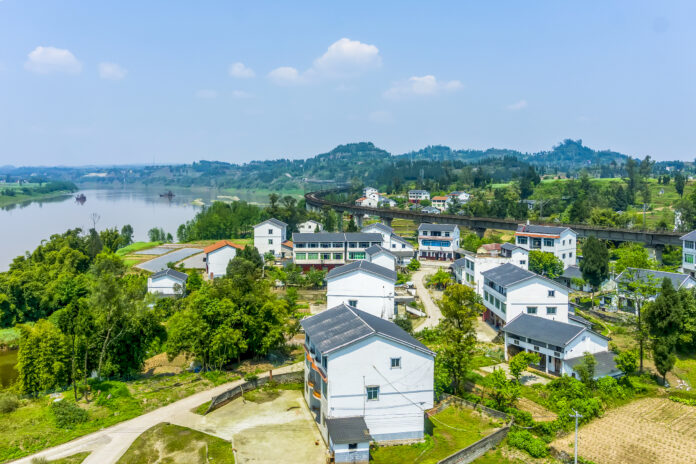When it comes to residential development in Nigeria, location is key. A good location amplifies your return on investment, enhances marketability, and reduces the time a property sits vacant or unsold. But putting money into just any plot of land can either become a goldmine or a regrettable financial sinkhole.
So, how do smart developers and investors know where to stake their claim?
Let’s explore the eight strategic markers of a prime residential area.
1. Proximity to Employment Hubs
No matter how well-designed or affordable a home is, if it’s far from where people earn their income, it may struggle to attract long-term occupants. A prime neighborhood is:
- Within or near major business districts
- Easily connected by road or transit to employment zones
- Attractive to working professionals, freelancers, and entrepreneurs
People want homes that reduce commute time. If the neighborhood is not directly near a job hub, solid transportation infrastructure becomes a must.
- Existing and Planned Infrastructure
A neighborhood’s growth is directly tied to its physical infrastructure. Investors should evaluate both:
- Current infrastructure (e.g., road conditions, drainage)
- Future infrastructure plans (e.g., rail, bridges, estates, tech parks)
These infrastructural investments often indicate government interest and urban planning, which translates into appreciation in land value.
What to Look Out For:
- Road dualization projects
- Ongoing electricity upgrades
- Waterworks or borehole development
- Fiber optic networks
- Public transportation nodes (BRT, rail, terminals)
3. Population Growth & Demand
Fast-growing neighborhoods are often driven by urbanization, affordability, and internal migration from city centers to outskirts. Developers should study:
- Population density trends
- Rental occupancy rates
- Migration patterns and land absorption speed
Population growth increases housing demand. As people move into an area, schools, markets, churches, and other services begin to follow, making it ripe for residential development.
4. Security and Perceived Safety
Insecurity remains a critical deciding factor for homeowners and renters. Developers must consider:
- Police station presence and community policing
- Street lighting and neighborhood watch groups
- Gated estates and access control systems
If you’re developing in an up-and-coming area, incorporate perimeter fencing, CCTV, security guards, and estate access control. Security sells.
5. Availability of Social Amenities
Nobody wants to drive 45 minutes to find a decent school or buy basic groceries. A prime neighborhood offers convenience through:
- Quality schools (nursery to secondary)
- Proximity to healthcare facilities
- Worship centers (churches, mosques)
- Recreation areas and parks
- Supermarkets, malls, and local markets
Residents want to feel like they’re part of a complete living experience. The more boxes you tick in terms of amenities, the more your development will stand out.
6. Legal Clarity and Government Support
Land documentation can make or break your project. Smart developers don’t build until the paperwork is right. Here’s what to check:
- Title verification (C of O, Deed of Assignment, Governor’s Consent)
- Land use and zoning status
- Encumbrances or land disputes
- Government development schemes or urban master plans
Always consult with land surveyors, legal advisors, and planning authorities before making a move.
7. Market Activity & Developer Interest
Prime neighborhoods don’t grow in isolation. They often attract multiple developers, big and small, which is a good sign. Look out for:
- Ongoing private estate projects
- High-rise residential buildings under construction
- Marketing campaigns by top real estate brands
A neighborhood with healthy developer competition tends to offer better long-term value, assuming it’s not oversaturated.
8. Future Appreciation Potential
Some prime neighborhoods don’t look like much today. But smart investors are trained to spot potential before it becomes popular.
What Signals Future Growth?
- Presence of universities or large institutions
- Industrial zones or seaports nearby
- Government relocation plans
- Tech hubs, data centers, or logistics corridors
The prime neighborhood of tomorrow may not have all the glitz of today, but it will have the right infrastructure, location, and investment potential to attract long-term value.
As a real estate developer or investor in Nigeria, your goal should be to develop or buy land in areas that tick these boxes:
- Proximity to work and urban centers
- Infrastructure and accessibility
- Population demand and lifestyle amenities
- Clear documentation and regulatory backing
- Market activity and long-term growth drivers
Because in real estate, value is built before the buildings rise.
Need Help Evaluating a Neighborhood or Project Feasibility?
At Win Realty, we help investors and developers:
- Identify high-potential locations
- Conduct due diligence and feasibility studies
- Plan strategic residential projects that meet local demand
Call/WhatsApp us today at +234 814 900 3508 for a free consultation.

